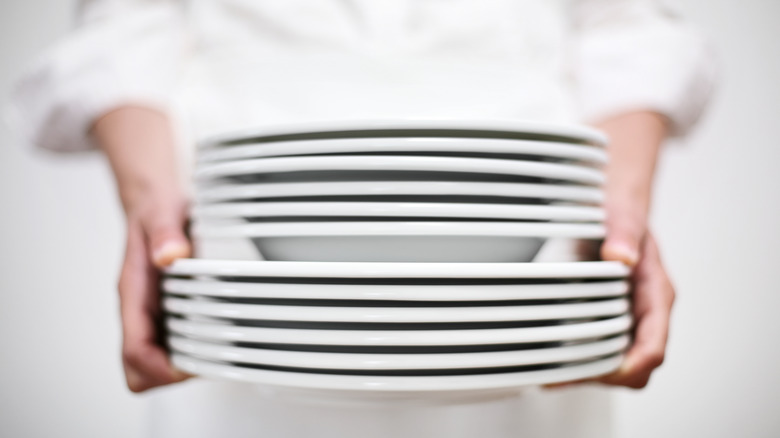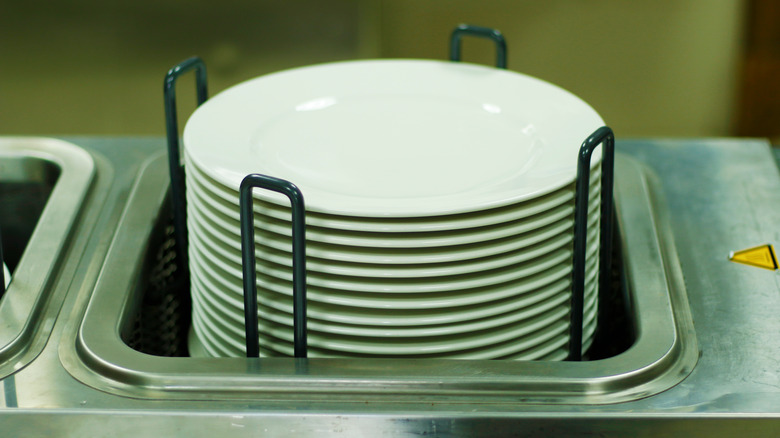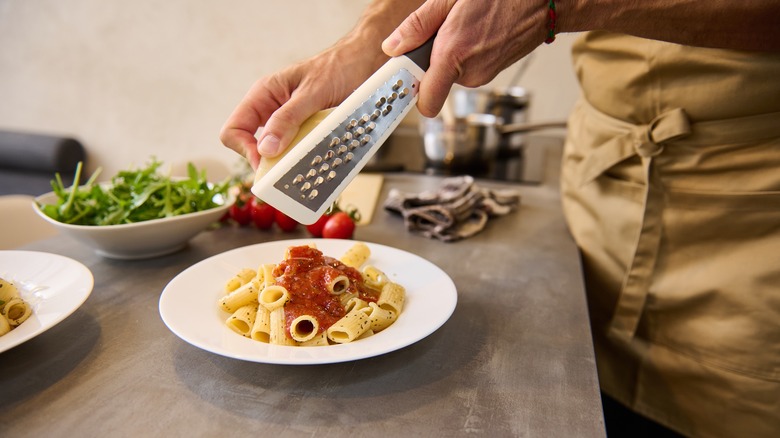Why Warm Restaurant Plates Make For A Better Dining Experience
If you've ever ordered a plate of sizzling fajitas or a bubbling dish of spaghetti at a restaurant, the staff has likely warned you, "Be careful, it's hot." Most of us assume that the dining ware is hot to the touch because of the temperature of the food, but in reality, the restaurant warmed up that plate long before your dish was served.
Part of the reason that food almost always tastes better at restaurants is simply because the establishment warmed up your plate before serving your meal. Details like warm plates are the small things that eateries do to really elevate a dining experience — it keeps your food warm while it travels from the kitchen to your table. You may be able to perfect a restaurant-quality recipe at home, but once you transfer your meal to a chilly plate, your food starts to cool down and the quality of your dish may deteriorate. To ensure that your food tastes hot and fresh by the time it arrives table side, most restaurants opt to serve hot meals on pre-warmed plates.
Why serving hot food on a cold plate is a restaurant no-no
The reason hot food gets cooled down by cold plates is because of conduction. This process is a type of heat transfer where the hotter object attempts to warm the cooler object. This explains why the handles on a metal pot become hot to the touch as you bring something to a boil. When heat travels through conduction, not only will a cool plate become warm, but your hot meal will also cool down as the heat is transferred from one object to another. To avoid conduction from messing with the temperature of your food, restaurants keep the dishes at a temperature that is the same or even hotter than the entree being served.
The temperature of your plate makes a huge difference when it comes to how your food is enjoyed at the table. If the plate is warmed to the same temperature as the food, there will be no heat transfer through conduction and the dish will cool naturally. A plate that is hotter than the entree you are being served will actually keep your food warm longer because the heat from the plate will transfer to your entree, although diners may be advised to proceed with caution before touching. Dishes tend to lose heat pretty fast depending on the method the restaurant uses to heat them and the material of the plate.
Yes, you can warm up your dishes restaurant-style at home
There are many methods that a restaurant may use to warm up its dinnerware. Heat lamps and strip warmers are often used to keep plates under a constant warm light before use. Some kitchens have special plate warmers, holding stackes of plates on a low heat. But not all plate heating techniques require fancy gadgets and expensive kitchenware.
Serving your meals on warmed plates is a restaurant secret every home chef should put into practice. Next time you are about to scoop a spoonful of pasta or place a perfectly cooked steak onto a cold plate, toss it into your oven for a minute or two on a very low heat. You can even place your entree and warmed dish under the broiler before serving, ensuring that both your food and plate reach the desired temperature before serving. If all your oven space is spoken for, you can run your clean plates under very hot water at the sink before serving. This is a great method for warming up plates in a pinch, although it won't get nearly as hot as other methods. Some creative at-home chefs have found success warming their plates in microwaves, on top of hot stovetops, and even dishwashers with a hot steam setting. Next time you want to impress a crowd or simply treat yourself to a fine dining quality dinner at home, don't forget to warm up your plate before serving.


